Solomon Islands police yesterday fired tear gas in the capital, Honiara, as crowds of protesters set fire to buildings, including a police station, and looted shops in an eruption of anger at the government, Radio New Zealand (RNZ) reported.
The protest was led by people from the Pacific nation’s largest island, Malaita Province, about 120km from the capital.
They were demanding that Solomon Island Prime Minister Manasseh Sogavare step down over failure to deliver promised infrastructure among other complaints, RNZ said.
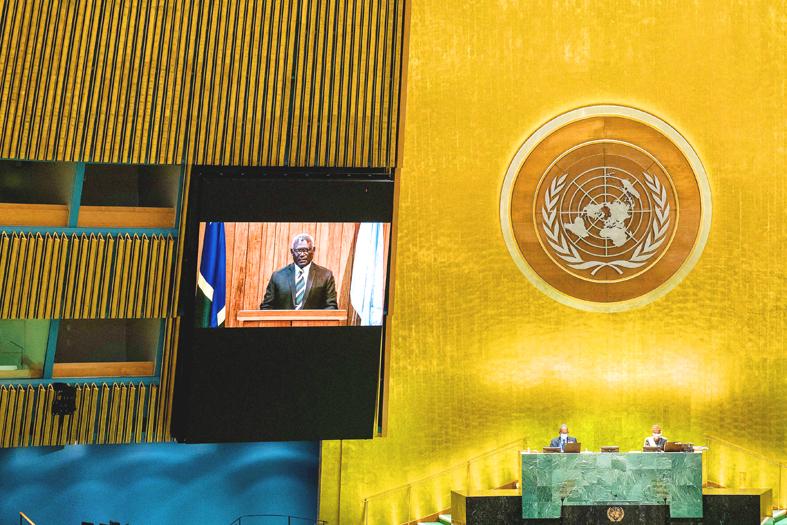
Photo: AFP
The protest began peacefully, but most schools and businesses in Honiara were closed by the afternoon as crowds tried to enter the Solomon Island National Parliament building while lawmakers were in session, RNZ local correspondent Georgina Kekea reported.
“A lot of Honiara residents were caught by surprise with what has happened,” Kekea said. “It has really disrupted operations ... and now people are not feeling safe anymore. Everyone’s trying to run back to their homes now.”
Videos on social media showed buildings on fire and police firing tear gas to disperse looters.
In addition to the burned-out police station, black smoke was seen rising from the parliament grounds after a leaf hut was set on fire, RNZ reported.
As well as anger about lack of development, the Solomon Islands government has faced pressure over a 2019 decision to cut ties with Taiwan and establish a formal relationship with China.
There was no mention of the protest on the Facebook pages of the Royal Solomon Islands Police Force or the prime minister’s press secretariat, and they could not immediately be contacted for comment.
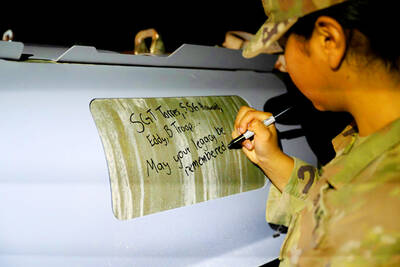
REVENGE: Trump said he had the support of the Syrian government for the strikes, which took place in response to an Islamic State attack on US soldiers last week The US launched large-scale airstrikes on more than 70 targets across Syria, the Pentagon said on Friday, fulfilling US President Donald Trump’s vow to strike back after the killing of two US soldiers. “This is not the beginning of a war — it is a declaration of vengeance,” US Secretary of Defense Pete Hegseth wrote on social media. “Today, we hunted and we killed our enemies. Lots of them. And we will continue.” The US Central Command said that fighter jets, attack helicopters and artillery targeted ISIS infrastructure and weapon sites. “All terrorists who are evil enough to attack Americans are hereby warned
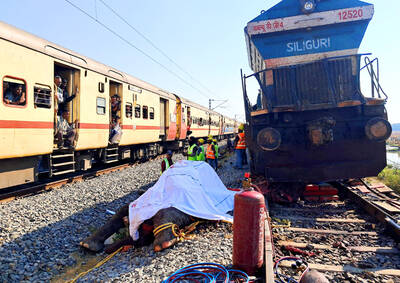
Seven wild Asiatic elephants were killed and a calf was injured when a high-speed passenger train collided with a herd crossing the tracks in India’s northeastern state of Assam early yesterday, local authorities said. The train driver spotted the herd of about 100 elephants and used the emergency brakes, but the train still hit some of the animals, Indian Railways spokesman Kapinjal Kishore Sharma told reporters. Five train coaches and the engine derailed following the impact, but there were no human casualties, Sharma said. Veterinarians carried out autopsies on the dead elephants, which were to be buried later in the day. The accident site
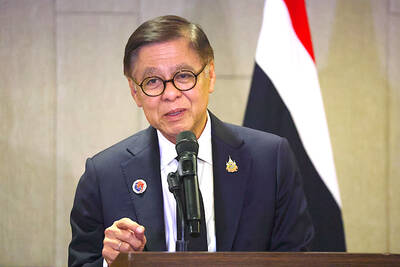
RUSHED: The US pushed for the October deal to be ready for a ceremony with Trump, but sometimes it takes time to create an agreement that can hold, a Thai official said Defense officials from Thailand and Cambodia are to meet tomorrow to discuss the possibility of resuming a ceasefire between the two countries, Thailand’s top diplomat said yesterday, as border fighting entered a third week. A ceasefire agreement in October was rushed to ensure it could be witnessed by US President Donald Trump and lacked sufficient details to ensure the deal to end the armed conflict would hold, Thai Minister of Foreign Affairs Sihasak Phuangketkeow said after an ASEAN foreign ministers’ meeting in Kuala Lumpur. The two countries agreed to hold talks using their General Border Committee, an established bilateral mechanism, with Thailand
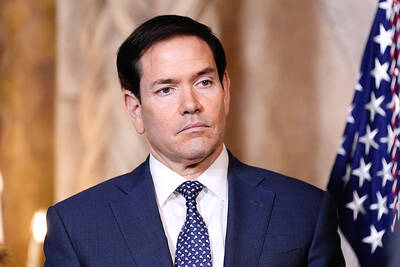
‘POLITICAL LOYALTY’: The move breaks with decades of precedent among US administrations, which have tended to leave career ambassadors in their posts US President Donald Trump’s administration has ordered dozens of US ambassadors to step down, people familiar with the matter said, a precedent-breaking recall that would leave embassies abroad without US Senate-confirmed leadership. The envoys, career diplomats who were almost all named to their jobs under former US president Joe Biden, were told over the phone in the past few days they needed to depart in the next few weeks, the people said. They would not be fired, but finding new roles would be a challenge given that many are far along in their careers and opportunities for senior diplomats can